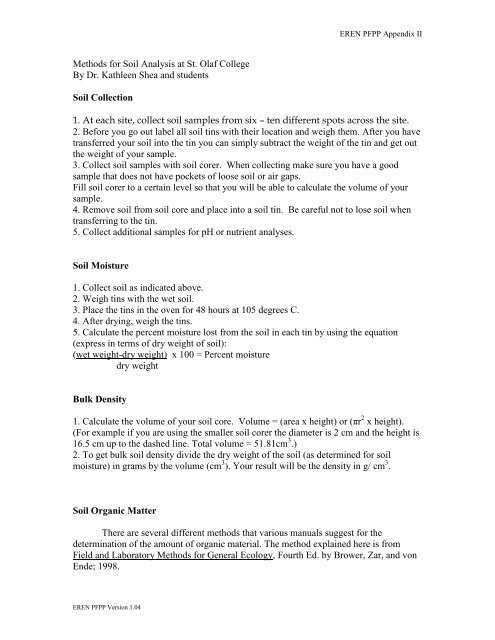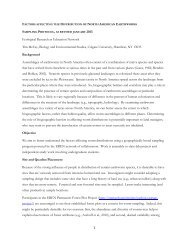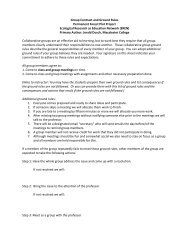Permanent Forest Plot Project (PFPP) - EREN
Permanent Forest Plot Project (PFPP) - EREN
Permanent Forest Plot Project (PFPP) - EREN
You also want an ePaper? Increase the reach of your titles
YUMPU automatically turns print PDFs into web optimized ePapers that Google loves.
<strong>EREN</strong> <strong>PFPP</strong> Appendix IIMethods for Soil Analysis at St. Olaf CollegeBy Dr. Kathleen Shea and studentsSoil Collection1. At each site, collect soil samples from six – ten different spots across the site.2. Before you go out label all soil tins with their location and weigh them. After you havetransferred your soil into the tin you can simply subtract the weight of the tin and get outthe weight of your sample.3. Collect soil samples with soil corer. When collecting make sure you have a goodsample that does not have pockets of loose soil or air gaps.Fill soil corer to a certain level so that you will be able to calculate the volume of yoursample.4. Remove soil from soil core and place into a soil tin. Be careful not to lose soil whentransferring to the tin.5. Collect additional samples for pH or nutrient analyses.Soil Moisture1. Collect soil as indicated above.2. Weigh tins with the wet soil.3. Place the tins in the oven for 48 hours at 105 degrees C.4. After drying, weigh the tins.5. Calculate the percent moisture lost from the soil in each tin by using the equation(express in terms of dry weight of soil):(wet weight-dry weight) x 100 = Percent moisturedry weightBulk Density1. Calculate the volume of your soil core. Volume = (area x height) or (πr 2 x height).(For example if you are using the smaller soil corer the diameter is 2 cm and the height is16.5 cm up to the dashed line. Total volume = 51.81cm 3 .)2. To get bulk soil density divide the dry weight of the soil (as determined for soilmoisture) in grams by the volume (cm 3 ). Your result will be the density in g/ cm 3 .Soil Organic MatterThere are several different methods that various manuals suggest for thedetermination of the amount of organic material. The method explained here is fromField and Laboratory Methods for General Ecology, Fourth Ed. by Brower, Zar, and vonEnde; 1998.<strong>EREN</strong> <strong>PFPP</strong> Version 1.04




